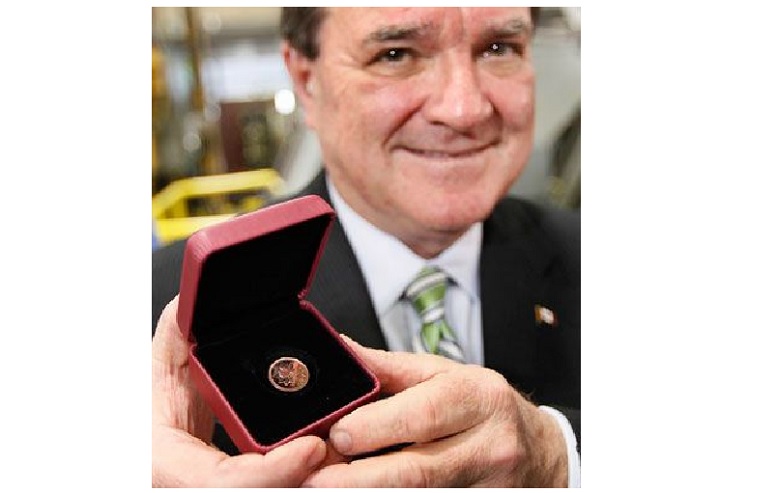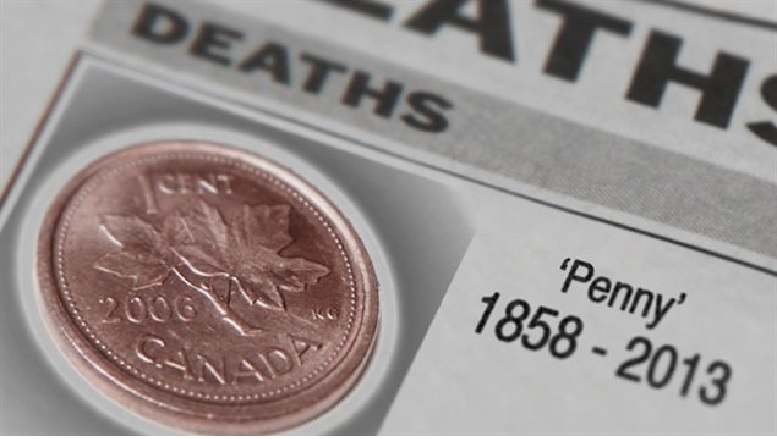
In the March “Economic Action Plan” of 2012, a segment was devoted to the penny, the one cent coin.
Originally made of copper, by 1997 to save production costs it was almost all zinc with a copper coating, and by 2000 mostly steel with a copper coating.

Finance Minister Flaherty holds the last penny struck which will be entrusted to the Currency Museum of the Bank of Canada in Ottawa (John Woods-CP)
Still the government claimed it was costing 1.6 cents to produce the 1-cent coin, and by phasing it out, it would save taxpayers about $11-million a year.
On May 4, 2012, the last penny was struck at the Royal Canadian Mint operation in Winnipeg Manitoba, by the then federal Finance Minister, Jim Flaherty.
The government the end of the penny really wouldn’t make a difference to consumers as prices would be rounded up and down to the nearest nickel or 5-cent sum.

The Canadian penny was at its peak in 2006, with almost 1.3 billion minted that year. On Feb. 4, the Royal Canadian Mint ceases distributing the Canadian penny, which dates back to 1858. the date listed at 2013, is beacuse that’s when the mints stopped distributing the coins and instead began pulling them out of circulation.. (Evan Mitsui/CBC)
The mint announced that it would begin pulling the penny from circulation early in 2013.
The final million pennies were sold as “collectors items”.


